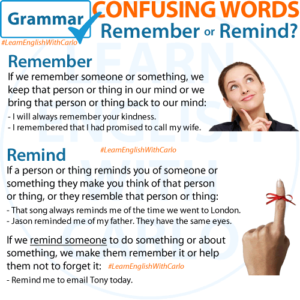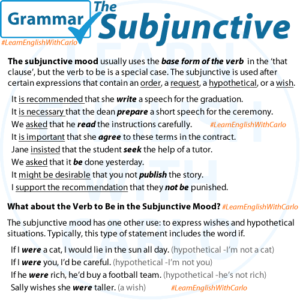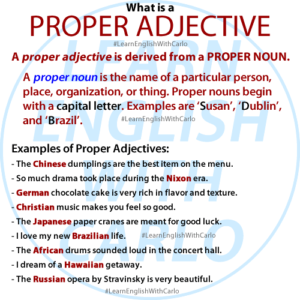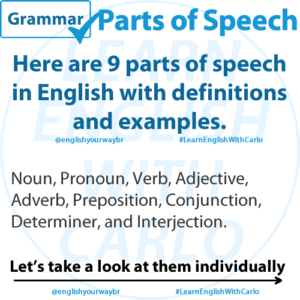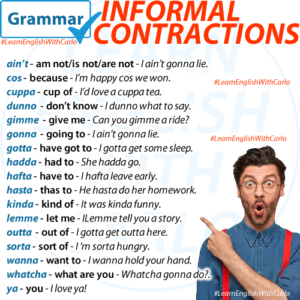Author's posts
As an English learner, you may have noticed that both “while” and “during” are used to talk about time. However, they are used differently in sentences, and understanding how to use them correctly can make your English more accurate and natural. Let’s break down the key differences between these two words. 1. “WHILE” Usage:“While” is …
Continue reading
Permanent link to this article: https://englishyourway.com.br/difference-between-while-and-during-esl/
“Remember” is about your own memory, recalling information independently, while “remind” involves assisting or being prompted to recall something. If you remember something, it’s a natural act of memory. If something reminds you, it’s usually a trigger that brings a memory to your mind. REMEMBER: “Remember” is a verb that describes the ability to recall …
Continue reading
Permanent link to this article: https://englishyourway.com.br/remember-vs-remind/
The subjunctive mood in English is used to express wishes, suggestions, demands, or hypothetical situations. It often appears after certain verbs (like “suggest” or “recommend”) and is characterized by using the base form of the verb, even with singular subjects (e.g., “I suggest that he go“). It can also express unreal or hypothetical situations, particularly …
Continue reading
Permanent link to this article: https://englishyourway.com.br/grammar-subjunctive/
“Accept” and “except” are two commonly confused words in English due to their similar pronunciation, but they have different meanings and uses. Accept Definition: To receive or agree to something willingly. Part of Speech: Verb Examples: Usage: Use “accept” when talking about agreeing to take something that is offered or recognizing something as true. Except …
Continue reading
Permanent link to this article: https://englishyourway.com.br/accept-vs-except/
These three words are often confused. So, here’s an explanation of the differences between “sometime,” “sometimes,” and “some time”: 1. Sometime: 2. Sometimes: 3. Some time: Usage Tips: Examples: Understanding these differences will help you use these words correctly in various contexts. Practice using them in sentences with the QUIZ below!
Permanent link to this article: https://englishyourway.com.br/sometime-sometimes-and-some-time/
In English, proper adjectives are derived from proper nouns, which name specific people, places, organizations, or things. What makes proper adjectives unique is that they always begin with a capital letter, just like the proper nouns they come from. These adjectives allow us to describe things with precision, linking the characteristics of a person, country, …
Continue reading
Permanent link to this article: https://englishyourway.com.br/understanding-proper-adjectives-in-english/
Here are 9 parts of speech in English with definitions and examples. NOUN A noun is a word used to identify a person, place, thing, or idea. Nouns are the basic building blocks of sentences and are essential for communication in any language. Examples of nouns include “dog,” “car,” “teacher,” “city,” and “happiness.” Nouns can …
Continue reading
Permanent link to this article: https://englishyourway.com.br/partsofspeech/
The words WHOSE and WHO’S may sound the same when spoken (both pronounced /ho͞oz/), but they have very different meanings and uses in English. Learning to use them correctly will help you avoid common mistakes in writing and speaking. WHOSE: Possessive Pronoun WHOSE is a possessive pronoun used to ask or talk about ownership or …
Continue reading
Permanent link to this article: https://englishyourway.com.br/whats-the-difference-between-whose-and-whos/
Both A and AN are indefinite articles in English, and they mean exactly the same thing. They are used before singular, countable nouns when you are not referring to a specific item. However, the choice between A and AN depends entirely on the sound of the word that follows—not necessarily the first letter of that …
Continue reading
Permanent link to this article: https://englishyourway.com.br/a-vs-an-indefinite-articles/
VOCABULARY – Informal (spoken) Contractions In English, as in most other languages, there are ways to shorten groups of words that commonly go together. We don’t do this in writing, just when we speak. They are called informal or spoken, contractions. ain’t – am not/is not/are not – I ain’t gonna lie. cos – because …
Continue reading
Permanent link to this article: https://englishyourway.com.br/vocabulary-informal-contractions/
Load more


